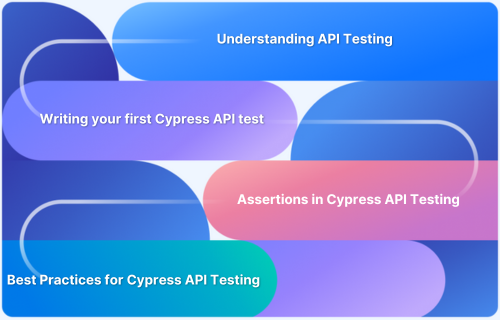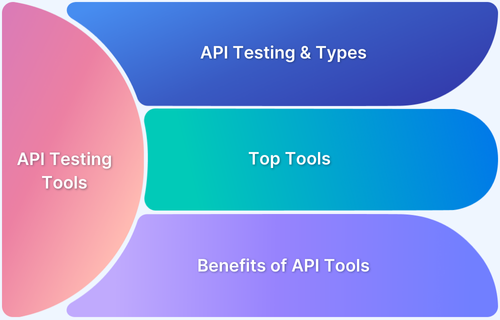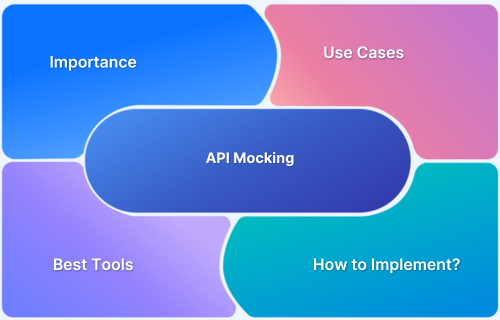GraphQL requires clients to explicitly request fields, unlike SQL’s SELECT *. This approach offers flexibility but can be complex when you need to fetch all fields.
Overview
GraphQL enables precise data fetching by requiring clients to specify exactly which fields they need from the API.
Methods for Retrieving All Fields in GraphQL
- Introspection: Use GraphQL introspection to query the schema and dynamically retrieve a list of all available fields for a type.
- Fragments: Define fragments that group all relevant fields, allowing for reuse across different queries.
- Dynamic Query Generation: Use code generation tools or scripts to automatically build queries that fetch all fields for a given type.
- GraphQL Code Generators: Leverage tools like GraphQL Codegen to generate queries based on the schema for all fields dynamically.
This article explores how to retrieve all fields in GraphQL, covering methods like introspection, fragments, and best practices, while also exploring the performance and security risks.
Why GraphQL Does Not Support All Fields
GraphQL was designed with explicit field selection in mind to ensure type safety, efficiency, and flexibility. Unlike SQL’s SELECT *, which fetches every field in a table, GraphQL requires clients to specify exactly which fields they need. This deliberate approach offers several advantages:
- Type Safety: By forcing clients to declare the fields they need, GraphQL ensures that all queries are validated against the schema. This prevents errors related to missing or mismatched fields.
- Predictable Query Results: With explicit field selection, clients have full control over the data they retrieve, ensuring predictable and consistent query results.
- Optimization: Limiting fields reduces the risk of overfetching, which occurs when more data than necessary is retrieved. Overfetching can negatively impact performance, especially on mobile networks or low-bandwidth environments.
- Schema Evolution: Explicit field selection helps prevent breaking changes when the schema evolves, as clients must update their queries if new fields are added or existing ones are modified.
Ultimately, by not supporting SELECT *GraphQL empowers developers to build more efficient, predictable, and maintainable applications, with an added focus on performance optimization and schema evolution.
Using Introspection to Discover Available Fields
GraphQL provides a powerful introspection feature, which allows clients to query the schema for information about the types, fields, and operations available. This enables developers to dynamically discover all fields for a given type without needing to hardcode them in queries. Introspection is especially useful for:
- Querying the Schema: You can use introspection to fetch the names of all fields available for a particular type in the schema. This is particularly useful when you need to explore the structure of a GraphQL API or dynamically generate queries.
- Generating Full Queries: By using introspection, you can automatically generate queries that retrieve all fields for a specific type. This is useful for debugging, testing, or schema exploration, as it allows you to access all available data for a type.
- Example Query: The following is an example of how to query for all fields of a specific type (e.g., User) using introspection:
{
__type(name: "User") {
fields {
name
}
}
}This introspection query returns a list of field names for the User type. Once you have this list, you can dynamically build a query to fetch all those fields.This introspection query returns a list of field names for the User type. Once you have this list, you can dynamically build a query to fetch all those fields.
Methods for Retrieving All Fields in GraphQL
Since GraphQL doesn’t support a SELECT * query, there are several ways to retrieve all fields for a given type. Below are the common methods that can be used:
Introspection Queries
As discussed earlier, GraphQL’s introspection feature allows you to query the schema for available fields. By introspecting a specific type (e.g., User), you can obtain a list of all the fields that exist for that type and then construct a query dynamically to retrieve them. This is a powerful method for exploring GraphQL APIs or automating the process of field retrieval.
Example Query:
{
__type(name: "User") {
fields {
name
}
}
}This query will return a list of all fields available for the User type.
Fragments
Another method for retrieving all fields is by creating fragments. A fragment in GraphQL allows you to group a set of fields that can be reused in multiple queries. By defining a fragment that includes all fields for a type, you can avoid writing the same field selections over and over.
Example Fragment for User Fields:
fragment UserFields on User {
id
name
email
address
phone
}You can then use this fragment in a query to retrieve all fields for a user:
query GetUser {
user {
...UserFields
}
}This method allows for efficient reuse of queries and fragments while keeping the codebase clean.
Dynamic Query Generation
In more complex scenarios, especially during development or debugging, you might want to automatically generate a query that retrieves all fields for a given type. This can be done by combining introspection with scripting or code generation tools.
For instance, using a Node.js script, you can query introspected fields and generate the corresponding GraphQL query dynamically.
Example of Dynamic Query Generation:
- Fetch the list of fields using introspection.
- Automatically construct a query string by appending each field name to the query.
This approach is particularly useful in tools, testing environments, or when building admin interfaces where all data needs to be fetched at once.
GraphQL Code Generators
Tools like GraphQL Code Generator can automatically generate GraphQL queries from your schema, including queries for all fields. These tools can help ensure your queries are always in sync with the schema and prevent errors caused by manual updates.
Code generators can also handle more complex scenarios, such as fetching fields from deeply nested types, allowing for a streamlined process of managing and maintaining large-scale queries.
Performance, Security, and Risks of Overfetching
Retrieving all fields in GraphQL offers flexibility but comes with significant risks, especially in performance, security, and data efficiency:
Performance Risks
- Increased Latency: Fetching more data can slow down queries, impacting response times and user experience.
- Higher Bandwidth Usage: Large queries with unnecessary fields consume more bandwidth, leading to slower data transfers, particularly on mobile.
- Server Load: Processing large queries strains server resources, affecting overall system performance.
Security Risks
- Exposing Sensitive Data: Over-fetching can unintentionally expose sensitive information, such as passwords or private details, which should be restricted.
- Access Control Issues: Bypassing field-level access control increases the risk of unauthorized data exposure.
- Data Leakage: Unnecessary fields might leak internal identifiers or sensitive business data to unauthorized clients.
Risks of Overfetching
- Unnecessary Data: Fetching more than needed wastes resources and complicates front-end handling.
- Complex Queries: Large queries become harder to maintain, manage, and refactor, leading to potential issues during schema changes.
- Cache Inefficiency: Overfetching reduces the effectiveness of caching, causing redundant requests and slower load times.
When to Use Full Field Queries
While fetching all fields in GraphQL can introduce inefficiencies, there are certain scenarios where it may be appropriate:
- Schema Exploration: When you’re exploring an unfamiliar schema, retrieving all fields helps you understand the available data and structure quickly.
- Debugging and Testing: During development, you may need all fields to thoroughly test or troubleshoot issues with the data.
- Admin or Internal Tools: For internal applications where you control both the server and client, fetching all fields can simplify data management and UI rendering.
- Single-Use or Temporary Use Cases: If the query is only needed for a short-term task or one-off operation (e.g., bulk data extraction), full field queries might be acceptable.
However, in production environments, it’s crucial to avoid using full field queries due to performance and security concerns.
Read More: What is API Testing? (with Examples)
Best Practices for Handling Field Retrieval
To ensure efficient and maintainable GraphQL queries, follow these best practices:
- Request Only Needed Fields: Always retrieve the specific fields required for an operation to avoid overfetching and reduce unnecessary data transfer.
- Use Fragments: Group frequently used fields into reusable fragments to keep queries concise and maintainable.
- Limit Query Complexity: Avoid querying too many nested fields or using large, complex queries that can harm performance and readability.
- Implement Field-Level Security: Secure sensitive fields by restricting access based on user roles and authentication status.
- Monitor Query Performance: Regularly audit and optimize queries to ensure they remain efficient, especially as the schema evolves.
- Use Pagination and Filtering: For large datasets, paginate results and apply filters to reduce the volume of data retrieved in a single query.
By adhering to these best practices, you can optimize the performance, security, and scalability of your GraphQL queries while maintaining clean and reusable code.
Debug GraphQL Queries and Manage Field Retrieval with Requestly HTTP Interceptor
When working with GraphQL, especially when dealing with large or dynamic queries, debugging and managing field retrieval can become challenging. Requestly HTTP Interceptor offers a powerful way to simplify this process by allowing you to intercept, modify, and inspect GraphQL requests in real time.
- Intercept and Inspect Queries: Easily capture and inspect the full GraphQL request, including fields, variables, and fragments, to understand exactly what data is being requested.
- Modify Requests Dynamically: Rewrite query bodies on the fly to add or remove fields, change variables, or test how different data retrieval strategies affect the response, without modifying the underlying code.
- Mock Responses: Simulate responses for specific fields or data sets, helping you test different scenarios, error handling, and UI behavior without backend dependencies.
- Test Impact of Different Queries: Quickly switch between querying all fields and more selective field retrieval to evaluate the performance and efficiency of your queries.
Try Requestly HTTP Interceptor Now
By integrating Requestly HTTP Interceptor into your GraphQL workflow, you can gain better insights into query structures, optimize field retrieval, and debug issues more effectively, all without needing to redeploy your application.
Conclusion
GraphQL’s explicit field selection model provides flexibility and efficiency but requires careful handling when retrieving all fields. By leveraging methods like introspection, fragments, and dynamic query generation, developers can manage field retrieval effectively while minimizing performance and security risks. Following best practices ensures queries remain efficient, secure, and maintainable.
Additionally, tools like Requestly HTTP Interceptor help streamline debugging and testing, offering real-time query inspection and modification for improved query management. Ultimately, understanding when and how to retrieve all fields is crucial for building scalable and performant GraphQL applications.







